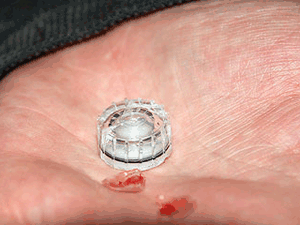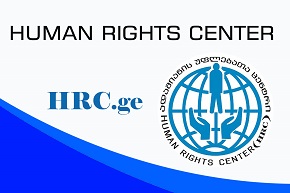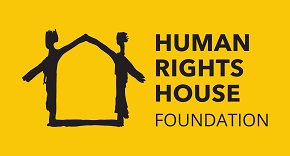Irakli Managadze
 Ministry of Internal Affairs finally pleaded that on May 6 law enforcers used non-lateral bullets during the clash in front of the Tbilisi Police Main Department. Shota Utiashvili, head of Analytic Department of the MIA confirmed this information with the Human Rights Center.
Ministry of Internal Affairs finally pleaded that on May 6 law enforcers used non-lateral bullets during the clash in front of the Tbilisi Police Main Department. Shota Utiashvili, head of Analytic Department of the MIA confirmed this information with the Human Rights Center.
- Yes, we used non-lateral bullets during the clash near the main department on May 6.
- How does similar action comply with the security norms and did police abuse its power when using non-lateral bullets?
- The police acted adequately. The demonstrators tried to enter the Police Department and policemen used bullets. As for the security norms non-lateral bullets can be used during the rallies and we did not breach any norms.
- As it was reported, the riot policemen shot the bullets in the heads of opposition leaders.
- I do not know; I cannot confirm this information.
This information could be confirmed by video-recordings that were shown on TV. Almost every opposition leader was shot in the head. Two demonstrators lost sight in one eye as a result of shooting.
So-called non-lateral bullets which were found on the scene of incident look like 18-millimeter-non-lateral bullets with caliber FN 3030. Military expert Irakli Aladashvili stated in his interview with the Human Rights Center that plastic bullets, though considered as non-lateral, if shot from the distance of 3 meters can kill a person.
-American-Belgian semi-automatic weapon FN303 with 15 plastic bullets fires the 8,5 gram bullet at the speed of 90 meters per second and it is very painful in the distance of 50 meters as well. Unlike the weapon for rubber bullets FN303 can be shot directly in one spot; this pistol is used also for paint-bullets which marks the person who will be arrested later.
Most tragic point of this incident is that two demonstrators lost eye-sight because of these bullets. Doctors took plastic bullet out of the eye-socket of demonstrators during the operation.
The fact that opposition leaders were shot in the forehead indicates that policemen had concrete order to mark the foreheads of opposition leaders.
Fortunately, the forehead of a female opposition leader was not shot but her four guards were shot in the ears and neck.
FN303 is not know-how for the MIA; this weapon was used during the dispersal of the demonstration on November 7, 2007 as well.
According to the spread information in 2007 the plastic bullets were not enough for the new weapon and they used them in rare occasion. Apparently, now the MIA has purchased plenty of plastic bullets.
Although the FN303 and plastic bullets are non-lateral when the riot police of the USA used them in Iraq, several demonstrators were killed who were shot from the distance of 3 meters…
Riot police and MIA in general breached the Law on Police; more precisely article 12, Part I of the Law which clearly states that police has right to use: shackles or other methods of bounding, rubber truncheon, tear-gas, light-sound equipment for psychological oppression, sources to destroy obstacles and to stop transport, water-cannons, armored vehicles and special transports, special paints, dogs and horses, electro-shock equipments.
We would like to remind the readers that initially the MIA categorically denied usage of rubber or other non-lateral bullets. Before the MIA pleaded the usage the society saw the conditions of the people who were injured by the bullets. Consequently, people inquired what kind of bullets was used by riot police. The video-materials showed by TV Companies obviously demonstrated that several opposition leaders, Levan Gachechiladze, Gia Maisashvili, Zviad Dzidziguri and Shalva Obgaidze were in blood as a result of shooting. Some other activists of the opposition parties, one camera-man and journalist from the Public Broadcasting, two guards of Nino Burjanadze were injured.



